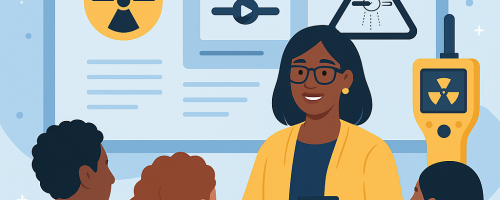While working from home during these winter months why not test your home’s radon gas levels?
Radon is the leading cause of lung cancer amongst non-smokers in Canada, and the second leading cause of lung cancer overall. With the onset of the pandemic many people found themselves spending more time at home. Now that the colder weather is here people are spending even more time at home, indoors. Having doors & windows shut to keep the warmth in can cause radon levels to accumulate and become a health hazard The higher the level and the longer the exposure, the greater the risk; this is why now, during these cold weather months, is a good time to test your home for radon gas.
What is Radon?
Radon is a radioactive gas in the ground that you cannot see or smell that forms when uranium in soil and rock breaks down. This gas can enter your home where ever your house contacts soil. All homes have some level of radon. Health Canada has set a recommended safety level of below 200 Bq/mᶟ. No two homes are the same and higher levels of radon gas can be found in well-built and/or new homes across the country. The only way to know if your home has an elevated level is to test your home.
How can you determine the level in your home?
- The first step is to purchase a test kit, available at hardware stores or at http://www.takeactiononradon.ca/test. The recommended testing period is 91 days. Another option is to have a certified radon professional set up the test for you https://c-nrpp.ca/.
- After 91 days send your test to a laboratory for analysis.
- If the analysis shows that your home is above the guideline level you should arrange for a radon professional to come in and mitigate the problem https://c-nrpp.ca/ or by calling 1-855-722-6777.
Mitigation can decrease your chances of developing lung cancer. This issue has been receiving more awareness, and realtors, municipalities, and provinces are advocating for testing or piloting radon-in-home studies. There have been studies across the country from British Columbia to Nova Scotia.

Results of a recent radon study in Hamilton, Ontario
One of the latest studies was published in September, 2019, when Hamilton Public Health Services in Ontario rolled out phase two of a three-year study testing homes for radon gas and the data to date is sobering. Of the homes tested, 14.3% were found to have levels higher than 200 Bq/mᶟ, higher than the national average of 7%. These large surveys have shown that two houses side by side can have very different radon levels. So even if you live in an area where most have tested below 200 Bq/m3, the only way you will know your home is also below the limit is to test.
Testing now means you could have the results by spring, just in time to enjoy your home indoors and out.
Resources
https://www.cbc.ca/news/canada/hamilton/hamilton-radon-gas-1.5803399







